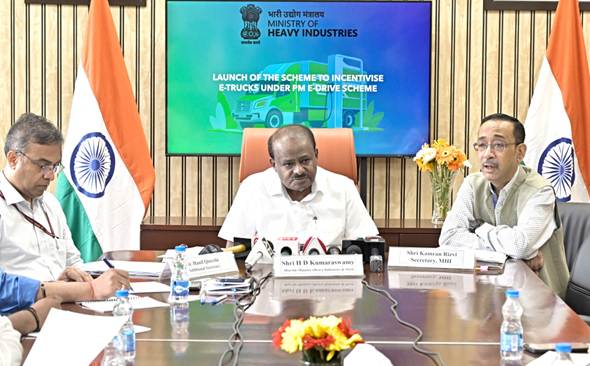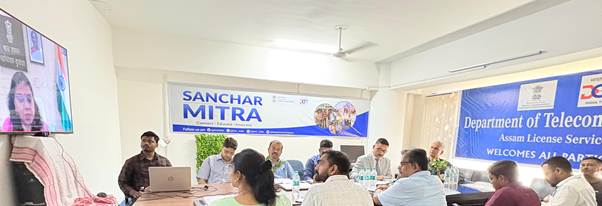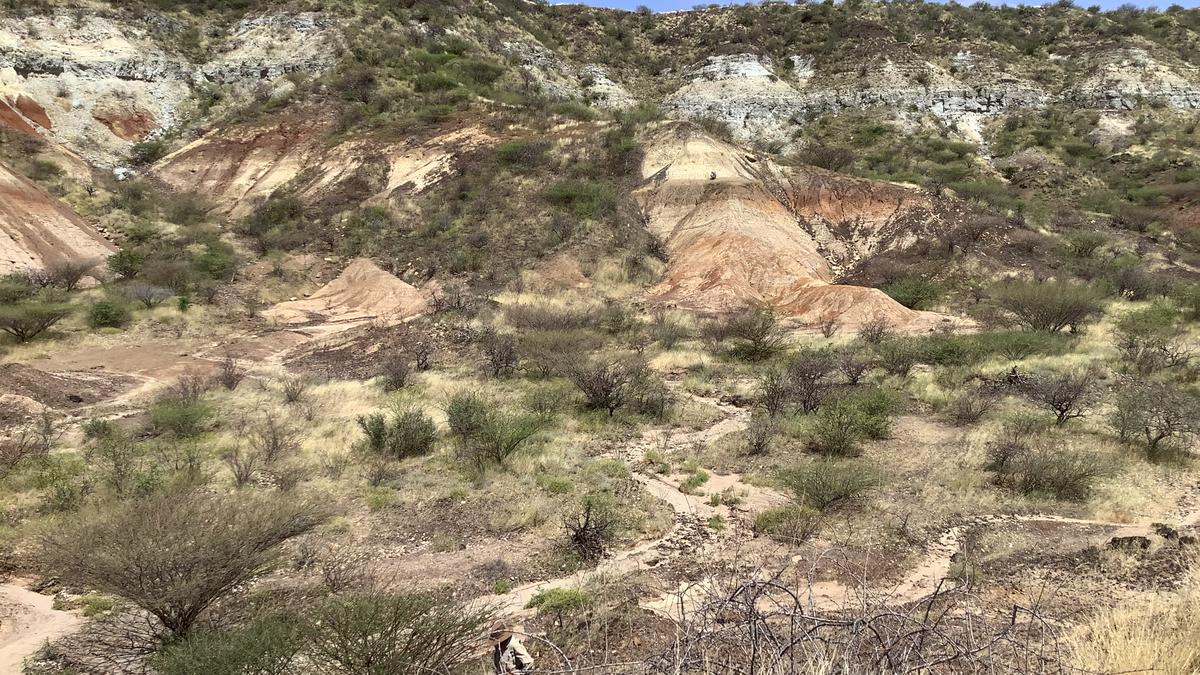e-Truck Incentive Scheme

- 15 Jul 2025
In News:
The Government of India, under the PM E-DRIVE initiative, has launched the country’s first dedicated financial incentive scheme for electric trucks (e-trucks). Spearheaded by the Ministry of Heavy Industries (MHI) and launched by Union Minister H.D. Kumaraswamy, the initiative is a key component of India's push toward green freight mobility, net-zero emissions by 2070, and cleaner urban air quality.
Key Features of the Scheme
- Scope & Objective: Aimed at reducing emissions from the freight sector, lowering logistics costs, and encouraging indigenous e-truck manufacturing under Atmanirbhar Bharat.
- Target Vehicle Categories:
- N2 Category: Trucks with Gross Vehicle Weight (GVW) between 3.5 to 12 tonnes
- N3 Category: Trucks with GVW above 12 tonnes and up to 55 tonnes (In case of articulated vehicles, only the N3-category puller tractor is eligible.)
- Eligibility Conditions:
- Mandatory scrapping of old diesel trucks for availing incentives
- Battery warranty: 5 years or 5 lakh km
- Vehicle and motor warranty: 5 years or 2.5 lakh km
- Incentives Structure:
- Maximum incentive: ?9.6 lakh per e-truck
- Incentive amount based on GVW
- Disbursal: Upfront reduction in purchase price; reimbursed to OEMs via PM E-DRIVE portal (first-come, first-served)
Implementation Timeline and Financial Outlay
- Duration: October 1, 2024 – March 31, 2026
- Budget:
- ?500 crore earmarked for e-trucks within an overall outlay of ?10,900 crore under PM E-DRIVE
- Dedicated ?100 crore allocation for 1,100 e-trucks registered in Delhi to combat air pollution
Wider PM E-DRIVE Ecosystem (formerly EMPS-2024)
- EV Categories Covered:
- Electric 2-Wheelers: Incentive of ?5,000/kWh (capped at ?10,000 in Year 1, ?5,000 in Year 2)
- Electric 3-Wheelers: ?25,000 in Year 1, ?12,500 in Year 2
- L5 Cargo EVs: ?50,000 in Year 1, ?25,000 in Year 2
- E-buses and e-ambulances: Covered under future extensions
- e-Vouchers: Introduced for digital verification and incentive tracking. One vehicle per Aadhaar; required for OEM reimbursement.
- Charging Infrastructure: The scheme promotes setting up EV Public Charging Stations (EVPCS) in high EV penetration cities and along major highways.
Strategic Importance and Impact
- Environmental: Diesel trucks constitute only 3% of the vehicle fleet but contribute to 42% of transport-related GHG emissions.
- Deployment Goal: Support for 5,600 e-trucks across India
- Sectoral Focus: Logistics, cement, steel, and port sectors
- Industry Participation: OEMs like Tata Motors, Ashok Leyland, Volvo Eicher are actively engaged
- CPSE Involvement: SAIL to procure 150 e-trucks and electrify 15% of hired vehicles.
Sanchar Mitra Scheme

- 15 Jul 2025
In News:
The Sanchar Mitra Scheme, launched by the Department of Telecommunications (DoT), Ministry of Communications, is a nationwide volunteer-based initiative aimed at promoting digital literacy, telecom safety, and cybersecurity awareness among citizens.
Initially piloted in select institutions, the scheme has now been scaled up nationally due to its successful outreach and impact.
Key Highlights:
- Who are Sanchar Mitras?
- Selected university student volunteers from streams such as telecom, electronics, computer science, and cybersecurity who act as digital ambassadors to spread awareness at the grassroots level.
- Core Objectives:
- Promote digital safety and cyber hygiene
- Raise awareness on cyber frauds, EMF radiation concerns, and responsible mobile usage
- Bridge the communication gap between telecom services and citizens
- Training & Exposure: Sanchar Mitras receive specialized training from:
- National Communications Academy–Technology (NCA-T)
- DoT Media Wing: Training covers topics such as 5G, 6G, Artificial Intelligence, Cybersecurity, and telecom technologies.
- Community Engagement: Volunteers organize awareness campaigns, collaborate with NGOs, and engage in door-to-door outreach to promote informed digital behavior.
- Assessment & Incentives: Participants are evaluated on innovation, consistency, and outreach impact. Top performers receive:
- Internship opportunities
- Involvement in national telecom projects
- Invitations to forums like the India Mobile Congress
- Participation in International Telecommunication Union (ITU) events
Recent Developments:
- The first expanded rollout was initiated in Assam, where DoT partnered with 18 top engineering institutions including IIT, IIIT, and NIT.
- Chaired by senior DoT officials, sessions in BSNL Bhawan, Guwahati, introduced the scheme and invited collaboration from academic institutions.
Significance for India:
- Digital Inclusion: Empowers citizens to participate securely in the digital ecosystem.
- Youth Engagement: Mobilizes Yuva Shakti as a force for nation-building and technological awareness.
- Cybersecurity Shield: Acts as a grassroots defense against increasing cyber threats and misinformation.
- Alignment with National Priorities: Supports India’s vision of leadership in the 4 Ds – Democracy, Demography, Digitization, and Delivery.
Astra Missile
- 15 Jul 2025
In News:
The Astra missile, developed by the Defence Research and Development Organisation (DRDO), is India’s first indigenous Beyond-Visual-Range Air-to-Air Missile (BVRAAM). Recently, the Indian Air Force (IAF) and DRDO successfully flight-tested the missile from a Sukhoi-30 MKI fighter jet off the coast of Odisha.
Key Features:
- Range: Over 100 km, enabling engagement of distant aerial targets.
- Speed: Capable of flying at speeds exceeding Mach 4.
- Operational Ceiling: Effective up to 20 km altitude.
- Seeker: Equipped with a fully indigenous Radio Frequency (RF) Seeker, enhancing precision targeting.
- Guidance System: State-of-the-art navigation and guidance technologies ensure high accuracy.
- All-weather Capability: Operable in day and night across diverse weather conditions.
Recent Tests:
- Conducted against high-speed unmanned aerial targets at varying ranges and conditions.
- Achieved pinpoint accuracy in both launches.
- All subsystems, including the RF seeker and tracking systems, functioned flawlessly.
- Tests were conducted at the Integrated Test Range (ITR), Chandipur.
Strategic Significance:
- Boosts India’s air-to-air combat capability.
- Reduces dependency on foreign missile systems.
- Supports the vision of Aatmanirbhar Bharat in defence technology.
- Over 50 Indian public and private sector industries, including Hindustan Aeronautics Limited (HAL), contributed to its development.
Lake Turkana Basin

- 15 Jul 2025
In News:
For the first time, scientists have successfully extracted and analyzed 18–24 million-year-old enamel proteins from extinct mammal fossils—pushing the frontiers of biomolecular preservation and reshaping our understanding of mammalian evolution. The groundbreaking findings were published in Nature (July 2025) and draw from fossils found in Lake Turkana Basin (Kenya) and the Haughton Impact Crater (Canada's High Arctic).
Key Highlights:
What was Discovered?
- Enamel proteins, trapped in the dense tooth enamel of extinct mammals, were recovered from fossils dating back 18–24 million years.
- These proteins are now the oldest biomolecular sequences ever recovered, exceeding the time limits of ancient DNA (which typically degrades within 1 million years).
Significance of Enamel Proteins:
- Enamel—being the hardest biological substance—acts as a molecular vault, shielding proteins from environmental degradation.
- These ancient proteins provide crucial phylogenetic information, even in hot tropical zones like Lake Turkana, where preservation was previously thought improbable.
Methodology:
- Researchers extracted structural enamel proteins like amelogenin, enamelin, and ameloblastin.
- Advanced mass spectrometry and rigorous contamination controls ensured data integrity.
- Over 1,000 peptides and 7 different enamel proteins were recovered from a 21–24 million-year-old rhinoceros tooth in the Arctic.
- Diagenetic alterations (e.g., oxidation, glycation) were used as authenticity markers.
Site-Wise Discoveries:
Lake Turkana Basin (Kenya):
- Fossils from a hot, arid region yielded enamel proteins up to 18 million years old.
- Demonstrated exceptional preservation due to fluviodeltaic sedimentation, which allowed rapid burial and protection from oxygen and heat.
- The Turkana Basin is a major palaeontological site in Eastern Rift Valley and home to species like proboscideans, rhinocerotids, hippopotamids, and hominoids.
- Enamel samples ranged from 1.5 to 29 million years old.
- Turkana Lake, the world’s largest permanent desert lake and a UNESCO World Heritage Site, lies in this region.
Haughton Impact Crater (Nunavut, Canada):
- Ancient enamel from a permafrost site enabled recovery of 21–24 million-year-old proteins.
- The site was once a temperate lake, aiding preservation under low oxygen (anoxic) conditions.
- Researchers reconstructed rhinocerotid evolution, showing Epiaceratherium diverged before the Elasmotheriinae-Rhinocerotinae split, revising long-held fossil-based phylogenies.
Scientific Implications:
|
Aspect |
Enamel Proteins |
Ancient DNA |
|
Age limit |
>20 million years |
<1 million years |
|
Preservation |
High in enamel |
Poor in hot climates |
|
Resolution |
Useful for deep-time splits |
High for closely related species |
|
Data Type |
Protein sequence |
Genetic sequence |
|
Application |
Tree of life reconstruction, evolutionary history |
Genome mapping, ancestry |
Agricultural Monitoring and Event Detection (AMED) API
- 15 Jul 2025
In News:
Google has introduced a set of artificial intelligence (AI)-based innovations to advance India’s agricultural practices and enhance the cultural and linguistic relevance of global AI models.
Agricultural Monitoring and Event Detection (AMED) API
- Launched by: Google DeepMind and Google’s Partnerships Innovation Team
- Collaborators: TerraStack, IIT-Kharagpur, and other local partners
- Foundation: Built on the Agricultural Landscape Understanding (ALU) API launched in 2023
- Key Features:
- AI-Based Field Monitoring: Offers field-level insights using satellite imagery and deep learning to monitor crops and agricultural activity.
- Crop-Specific Data: Provides details on crop type, season, field size, and three years of historical cropping and land-use data.
- Event Detection: Detects agricultural changes at individual field levels, improving yield prediction and input management.
- Biweekly Updates: Data refreshed every two weeks to ensure real-time agricultural monitoring.
- Open Access for Innovation: Available for integration by agri-tech startups, financial institutions, and government bodies to support data-backed rural lending, climate adaptation, and sustainable farming practices.
- Objectives and Utility:
- Empower agriculture stakeholders with granular, real-time intelligence.
- Facilitate precision agriculture by tailoring support for soil, water, and climatic needs.
- Strengthen India's resilience to climate-related risks and promote informed policymaking.
- Help financial services design location-specific rural credit systems.
Amplify Initiative: Cultural and Linguistic Localization of AI
Google is also working to enrich AI systems with deeper understanding of India’s diversity through the Amplify Initiative, piloted earlier in Sub-Saharan Africa.
Indian Collaboration:
- Partner Institution: IIT-Kharagpur
- Goal: Create hyperlocal annotated datasets in multiple Indic languages related to healthcare, safety, and social issues.
- Aims to ensure that Large Language Models (LLMs) are better aligned with India’s cultural plurality and linguistic complexity.
Global Impact:
- Builds on success in Africa, where 8,000+ queries in 7 languages were developed by 155 experts to address issues such as chronic illness and misinformation.
